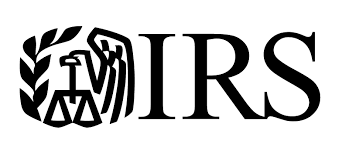April 15, 2020
Get My Payment allows people to provide direct deposit information and gives payment date
WASHINGTON – Working with the Treasury Department, the Internal Revenue Service today unveiled the new Get My Payment with features to let taxpayers check on their Economic Impact Payment date and update direct deposit information.
With an initial round of more than 80 million Economic Impact Payments starting to hit bank accounts over the weekend and throughout this week, this new tool will help address key common questions. Get My Payment will show the projected date when a deposit has been scheduled, similar to the “Where’s My Refund tool” many taxpayers are already familiar with.
Get My Payment also allows people a chance to provide their bank information. People who did not use direct deposit on their last tax return will be able to input information to receive the payment by direct deposit into their bank account, expediting receipt.
“Get My Payment will offer people with a quick and easy way to find the status of their payment and, where possible, provide their bank account information if we don’t already have it,” said IRS Commissioner Chuck Rettig. “Our IRS employees have been working non-stop on the Economic Impact Payments to help taxpayers in need. In addition to successfully generating payments to more than 80 million people, IRS teams throughout the country proudly worked long days and weekends to quickly deliver Get My Payment ahead of schedule.”
Get My Payment is updated once daily, usually overnight. The IRS urges taxpayers to only use Get My Payment once a day given the large number of people receiving Economic Impact Payments.
How to use Get My Payment
Available only on IRS.gov, the online application is safe and secure to use. Taxpayers only need a few pieces of information to quickly obtain the status of their payment and, where needed, provide their bank account information. Having a copy of their most recent tax return can help speed the process.
- For taxpayers to track the status of their payment, this feature will show taxpayers the payment amount, scheduled delivery date by direct deposit or paper check and if a payment hasn’t been scheduled. They will need to enter basic information including:
-
- Social Security number
- Date of birth, and
- Mailing address used on their tax return.
- Taxpayers needing to add their bank account information to speed receipt of their payment will also need to provide the following additional information:
- Their Adjusted Gross Income from their most recent tax return submitted, either 2019 or 2018
- The refund or amount owed from their latest filed tax return
- Bank account type, account and routing numbers
Get My Payment cannot update bank account information after an Economic Impact Payment has been scheduled for delivery. To help protect against potential fraud, the tool also does not allow people to change bank account information already on file with the IRS.
A Spanish version of Get My Payment is expected in a few weeks.
Don’t normally file a tax return? Additional IRS tool helps non-filers
In addition to Get My Payment, Treasury and IRS have a second a new web tool allowing quick registration for Economic Impact Payments for those who don’t normally file a tax return.
The Non-filers: Enter Payment Info tool, developed in partnership between the IRS and the Free File Alliance, provides a free and easy option designed for people who don’t have a return filing obligation, including those with too little income to file. The new web tool is available only on IRS.gov, and users should look for Non-filers: Enter Payment Info Here to take them directly to the tool.
Non-filers: Enter Payment Info is designed for people who did not file a tax return for 2018 or 2019 and who don’t receive Social Security retirement, disability (SSDI), or survivor benefits and Railroad Retirement benefits. Additional information is available at https://www.irs.gov/coronavirus/non-filers-enter-payment-info-here.
No action needed by most taxpayers
Eligible taxpayers who filed tax returns for 2019 or 2018 will receive the payments automatically. Automatic payments will also go in the near future to those receiving Social Security retirement, or disability (SSDI), or survivor benefits and Railroad Retirement benefits.
General information about the Economic Impact Payments is available on a special section of IRS.gov: https://www.irs.gov/coronavirus/economic-impact-payment-information-center.
Watch out for scams related to Economic Impact Payments
The IRS urges taxpayers to be on the lookout for scams related to the Economic Impact Payments. To use the new app or get information, taxpayers should visit IRS.gov. People should watch out for scams using email, phone calls or texts related to the payments. Be careful and cautious: The IRS will not send unsolicited electronic communications asking people to open attachments, visit a website or share personal or financial information. Remember, go directly and solely to IRS.gov for official information.
More information
The IRS will post frequently asked questions on IRS.gov/coronavirus and will provide updates as soon as they are available.



